by W.S. Cranshaw* (1/19)

Figure 1: Mantids have large widely spaced eyes and can pivot their head, features that help them locate and capture prey. |
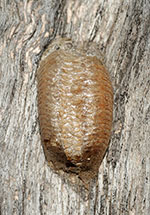 |
 |
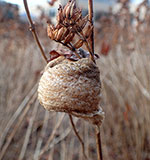
Figure 2a-c: Egg cases (oothecae) of three kinds of mantids: a) European mantid; b Carolina mantid; c) Chinese mantid. |
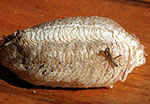
Figure 3:Nymphs of the European mantid just after hatching from the egg. |
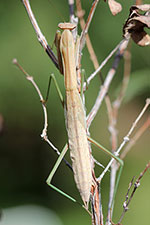
Figure 4: Late stage nymph of a Chinese mantid. Small developing wings (wing pads) are visible as mantids approach the adult stage. |

Figure 5: Pair of European mantids. The smaller brown mantid in the photo is a male, the green one a female. |
Quick Facts…
- Mantids are large, distinctive insects that feed on other insects, including some pests.
- All mantids survive winter in the egg stage, within a large egg case (ootheca).
- There are seven kinds of mantids that occur in Colorado, five that are native to the state and two that are introduced species.
- The most commonly encountered mantid in much of the state is the European mantid, which may be brown or green.
- Egg cases of the Chinese mantid are commonly sold through nurseries and garden catalogs.
Mantids are some of the most distinctive and well-recognized of all the insect groups. All mantids are predators that feed on various insects, including some pest species. Seven species of mantids are found in Colorado (Table 1), five of which are native to the state.
Mantids are very distinctive insects. All have front legs which are large and well-designed for grasping prey. The segment of the body containing these legs (prothorax) is very elongated as is the overall body form. Mantids also have the ability to easily turn their heads in order to see in all directions and have widely spaced eyes that give them excellent binocular vision.
General Life History
Mantids survive winter as eggs. The eggs are laid in a case, known as an ootheca, and each contains several dozen to over a 100 eggs. A foamy material covers the oothecal as it is being produced and this then hardens to protect and insulate the eggs. These egg cases are attached to solid surfaces such as rocks, buildings, and dried plant stems.
Eggs hatch in late spring (or earlier if kept in the warmth of a building). The small, young mantids feed on gnats and other insects, sometimes cannibalizing other mantids emerging from the same egg mass. As they grow, they are capable of capturing increasingly larger prey including grasshoppers, large flies, and bees. Most mantids are very slow moving and hunt primarily by ambush, waiting for suitable prey to pass within reach. The smaller kinds of ground dwelling mantids (ground mantid, grasshopper mantid) that occur in Colorado grasslands can run quickly and jump.
Following several molts, development is complete by late-summer and the adults are present. Adult males are smaller and more slender than females. Among winged species, males are much more likely to fly; females are incapable of flying once they begin to swell with eggs. Females of ground mantid and grasshopper mantid do not possess wings and males may also be wingless.
During mating it is sometimes reported that the female eats the male. This does occasionally happen and the male may even continue to mate more vigorously after decapitation. However, this cannibalistic behavior occurs infrequently and usually only if the female is starved.
All mantids die at the end of the season, usually by late September or early October. Grasshopper mantids have been found into November.
Mantids for Biological Control
Egg cases of the Chinese mantid are commonly sold for control of garden pests. Although release of eggs may result in several of these statuesque predators developing within the garden, little pest management benefit can be expected.
Mantids have non-selective feeding habits, feeding on essentially any moving insect of the right size that they can catch. Although this may include an occasional grasshopper or other pest insect, most of what mantids feed on are various flies, gnats, bees, and other insects that do not harm plants. Also, since mantids only have a single generation each year they cannot sufficiently increase in numbers if a pest insect outbreak occurs. Furthermore, the one kind of mantid that is available for sale, Chinese mantid, will rarely, if ever, successfully survive the cold, dry winters in Colorado.
Rearing Mantids
Egg cases of the Chinese mantid are commonly sold via mail order and the young can be reared easily. However, they should be kept in separate containers because of their cannibalistic habits. Small active insects, such as leafhoppers and fruit flies, are suitable to feed the younger mantids. Midges and other small flies that gather around porch lights are another good source of food for the newly emerged mantids. As they get older larger foods such as grasshoppers or crickets can be used. Mantids do need some additional water, which can be provided by misting the inner surface of the rearing container once a week.
If fertilized adult females are being reared, provide a stick or rock on which to lay the egg case. The overwintering egg cases do require a chill period of a few months before they will hatch. If storing egg cases between seasons they should be kept in a cold, protected site such as in outbuildings or on the north side of homes during the winter months. Mantids will not hatch from egg cases kept in a warm indoor location through winter.
| Table 1: Mantids found in Colorado. | ||
| Common Name | Scientific Name | Comments |
| European mantid | Mantis religiosa | The most commonly encountered mantid. The European mantid is “the” praying mantid, a European native that is now well established in much of Colorado. These are quite large insects (50-75mm) and come in a range of color from pale brown to dark green. A characteristic “bull’s- eye” under the foreleg is useful for distinguishing this species. |
| Chinese mantid | Tenodera aridifolia sinensis | The largest mantid, often reaching lengths of 10-11cm (ca. 4 inches) when full grown. These are may be predominantly brown or green, and wings often have a green and yellow stripe along the side. The Chinese mantid is not native to the state but is widely sold through garden catalogs and some garden centers. However, few, if any survive winters outdoors in Colorado. |
| Carolina mantid California mantid Bordered (Arizona) mantid |
Stigmomantis carolina Stigmomantis californica Stagmomantis limbata |
These are three related species found primarily in the warmer, southern areas of the state. The Carolina mantid occurs in eastern Colorado, particularly southeastern Colorado, and can be common; California mantid occurs in western Colorado and can be common the Tri-Rivers counties. The bordered mantid occurs in southwestern areas but is rare in Colorado. Stagmomantis species can range from greens to grays. They are slightly smaller than the European mantid (48-65mm) and females have shorter wing covers that do not completely cover the tip of the abdomen. |
| Ground mantids | Litaneutria minor | These small mantids (25-35mm) are usually seen on the soil and occur in intact grassland areas that have not been overly disturbed by grazing or plowing. They have been frequently collected from grasslands in eastern Colorado and are known to also occur in western Colorado. Ground mantids have gray-brown coloration that blends well with the soil background. Females have only short non-functional wings (brachypterous); males may have wings but also may be wingless. They are very fast moving mantids that can jump. |
| Grasshopper mantid | Yersiniops solitarium | The smallest of the Colorado mantids (18-22mm) the grasshopper mantid is an uncommonly seen species that occurs in prairie sites of southeastern Colorado where grasses and shrubs are in mixture. They are often straw colored and the area around the eyes projects and is slightly pointed. They are wingless or have very short, non-functional wings. The grasshopper mantid is an excellent jumper. |
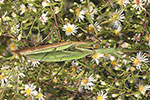
Figure 6: Mating pair of Chinese mantids. Photograph by David Shetlar, The Ohio State University. |
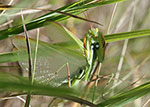
Figure 7: A European mantid making a warning display. A bull’s-eye patterned marking under the forelegs is distinctive of this common mantid. |
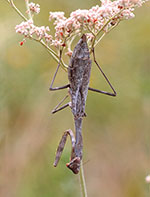
Figure 8: Female of the Carolina mantid. This is a native species found in eastern Colorado and ranges in color from mottled grays to green. |
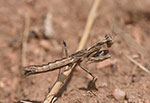
Figure 9: Ground mantid. |
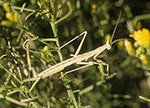
Figure 10: Grasshopper mantid. |
Mantis or Mantid?
The terms mantid and mantis can be used interchangeably. Technically, “mantis” is the term most properly applied to a genus of mantids, the most widely recognized being the European mantid (“praying mantid”), Mantis religiosa. Mantid is the best term applied to all members of this insect order, Mantodea.
*Colorado State University Extension entomologist and professor, bioagricultural sciences and pest management. 3/02. Revised 1/19.
Colorado State University, U.S. Department of Agriculture, and Colorado counties cooperating. Extension programs are available to all without discrimination. No endorsement of products mentioned is intended nor is criticism implied of products not mentioned.
Go to top of this page.





